Future Now
The IFTF Blog
Podcast: Fab Labs, Fab Cities, & India becoming an Internet of Things hub
From a storied past as spice market and trading hub, India's southwestern state of Kerala now aims to become a hub for the Internet of Things.
by IFTF Research Fellow Mary Kay Magistad; reposted from Whose Century Is It? on PRI

Kochi, formerly the ancient port of Cochin, is part of Kerala, which has embraced the Fab City movement with the aim of becoming a hub in the Internet of Things era. Credit: Mary Kay Magistad
From a storied past as spice market and trading hub, India's southwestern state of Kerala now aims to become a hub for the Internet of Things. It has joined the Fab Lab network, started by MIT's Center for Bits and Atoms, and was the first region or state to sign on as a Fab City.
India’s southwestern coast was once a crossroads for traders, travelers and imperialists — the Chinese and Japanese, the Dutch, the Portuguese and the British. Cochin was a center of the spice trade, with huge wooden warehouses filled with cardamom and cloves, cinnamon and ginger.

Kochi spice shop, in India's southwestern state of Kerala
Credit: Mary Kay Magistad
But these days, Cochin, now called Kochi, and its home state of Kerala, are looking to the future, with dreams of becoming a high-tech manufacturing hub in the era of the "Internet of Things."
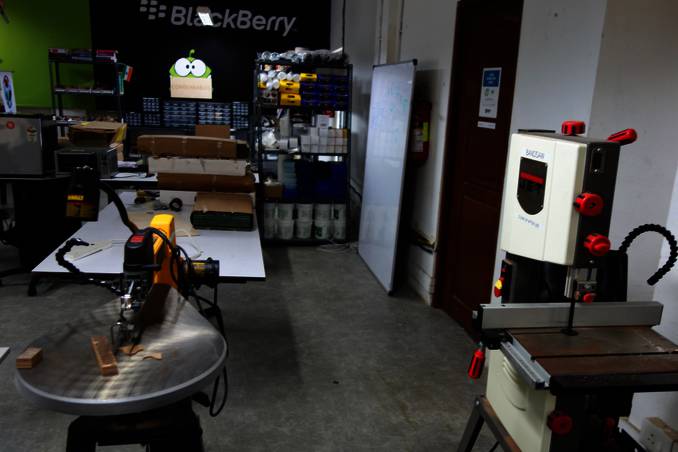
Kochi Fab Lab. Credit: Mary Kay Magistad
This also happens to be a part of India’s own national ambition, to turbo-charge its once anemic manufacturing sector — anemic, at least, compared to China’s — and make that a more important contributor to India’s GDP growth, and to the global economy. There’s now a “Make in India” campaign, and India is fast moving up the ranks in manufacturing — it’s now sixth in the world.
In this effort, Kerala has much to offer. It already has the highest literacy rate in India, an impressive e-literacy rate — like, smart phones and computers — and aspirations to have India’s highest f-literacy. That’s “f” for fabrication, and the idea that as many people as possible become comfortable using high-tech tools to make what they use, and use what they make.
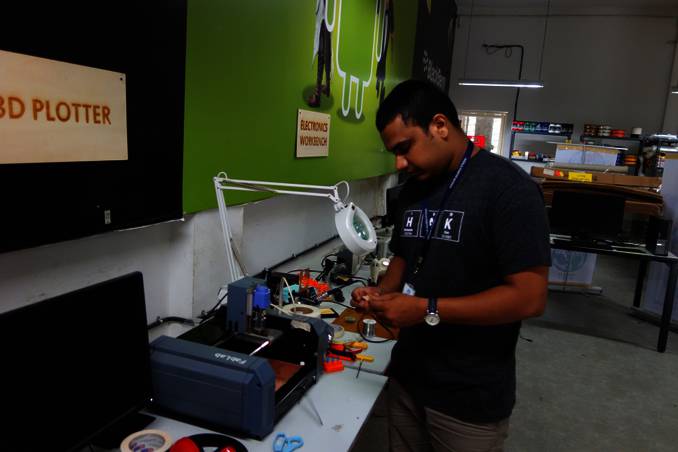
Daniel Jeevan heads activities at Kochi FabLab. Credit: Mary Kay Magistad
In fact, Kerala, last year, became the first state or region to sign on to the Fab City movement, an initiative that started with Fab Labs at the Massachusetts Institute of Technology (MIT) and beyond, and is now a network of about 1,000 Fab Labs around the world.
The first Fab Lab was born at roughly the same time as the Maker Movement, at MIT’s Center for Bits and Atoms, led by professor Neil Gershenfeld. He says there’s both overlap and considerable difference between the two movements.
“It’s part of the same story. You can think of it as the tip, and this is the iceberg,” he says, adding that an interview with him was in the first issue of Make Magazine “But to understand how these scales relate, the research we’re doing at CBA (the Center for Bits and Atoms), related to Fab Labs, is how you make the Star Trek replicator. It really is a project in turning codes into materials, how to program from atoms on up. And that’s maybe a 20-year research road map."
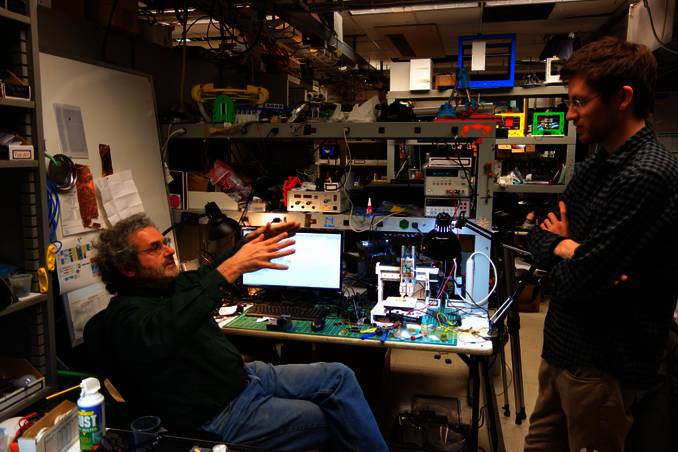
MIT professor Neil Gershenfeld, who directs the Center for Bits and Atoms and oversees the Fab Lab and Fab City movements, talks with PhD student Will Langford. Credit: Mary Kay Magistad
Gershenfeld says the broader Maker Movement "which I love ... overfocuses on a lot of short-term technology without very good mentoring." He thinks 3D printers are especially overhyped because, he says, such tools are just a means to an end of empowering individuals to make almost anything, and the tools will change over time.
Beyond that, if the Maker Movement is about unstructured play and creativity and exploration, about rediscovering the joy and satisfaction of making something yourself, the Fab Lab and Fab City movements are more structured and purposive. They have a road map, a global network with webcams in most labs that allow those working in the labs to share ideas and help solve each other's problems, and even similar equipment. The standard Fab Lab has a complement of machines including a laser printer, CNC router and, yes, for now, 3D printers, plus smaller tools and component parts, totaling about $100,000. Such labs are now up and running in Egypt, Saudi Arabia, Rwanda, Suriname, Afghanistan, Vietnam, India and beyond.
Out of the Fab Lab movement came the ideas that if designing and making as an individual was good, embracing this movement as a city or region could be downright transformative. Thus was born the Fab City movement, starting when Barcelona's city planner and mayor started a project to put Fab Labs in all the city's districts.
"Barcelona has a fabulous design sense and 50 percent youth unemployment. A whole generation can't leave home and work," Gershenfeld says. "The idea is, instead of hard-earned money from limited jobs being spent on products coming in at the harbor, and then trash trucks going out to a dump, in the same way the city produces electricity or clean water, the idea is for the city to produce what it consumes locally. Now it's not protectionism. The data comes and goes freely, but the atoms stay."
Barcelona has pledged that over a 40-year period, it will move toward a goal of no longer needing to import and export, because it will have a cradle-to-cradle urban ecosystem that repurposes physical material, much like taking apart Lego blocks and putting them back together. There are now at least 16 Fab Cities and regions that have pledged their own version of moving toward this 'atoms to bits, bits to atoms' ethos. Kerala, in southwestern India, was the first state, as opposed to city, to take the pledge, in 2015.
Kerala has started by spreading the word about Fab Labs and the coming revolution in digital fabrication, and by putting Raspberry Pis in the hands of 10,000 schoolkids, with more to come. A Raspberry Pi is not a dessert, but a credit card-sized $35 computer, handy when making Internet of Things gadgets and for many other projects. One Kerala student programmed a Raspberry Pi to keep track of which government officials were showing up for work.
Higher on the skills hierarchy, two Fab Labs are now open in Kerala. Gershenfeld came to Kerala in the summer of 2015 to inaugurate them. Twenty more mini-Fab Labs are set to open in engineering schools around the state. Students in each can take Gershenfeld's MIT class "How to Make Almost Anything," connected live via internet to him and to other Fab Labs around the world as he teaches, a more interactive approach than traditional distance learning.
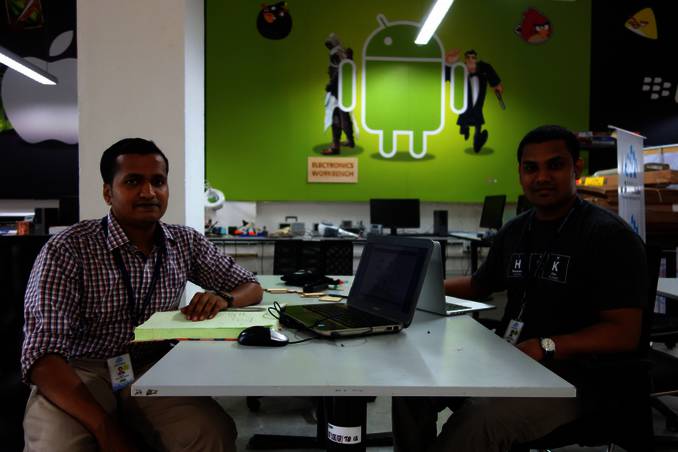
Startup Kerala technical officer Varun Geethamony (left) and Kochi Fab Lab head Daniel Jeevan (right). Credit: Mary Kay Magistad
All these efforts by the Kerala government are meant to increase skill and spur innovation, something that Kerala Startup Mission technical officer Varun Geethamony says – as a former engineering student – is in short supply among Kerala’s engineering students.
“Most of them don’t actually innovate anything,” he says. “So once we are out of engineering, we know only about the theories, nothing in practical. And the problem is, even if they’re having an innovative idea, there is no support mechanism for it.” He complains that the textbooks are old, that some teachers resist learning about and teaching new technologies, and that many engineering schools have little cutting edge equipment on which students can get practical experience. “So they graduate knowing only theory, without practice.”
In signing on to the Fab Cities movement, Kerala has pledged to try to move toward what’s called Fab 2.0 — having a Fab Lab whose machines can create machines for yet another Fab Lab. Another project is creating a Community Owned Wifi Mesh, or, as they put it here, Cow-Mesh, so even people who don’t have internet access can get information about their community, and share ideas, and post complaints, in wifi chatrooms.
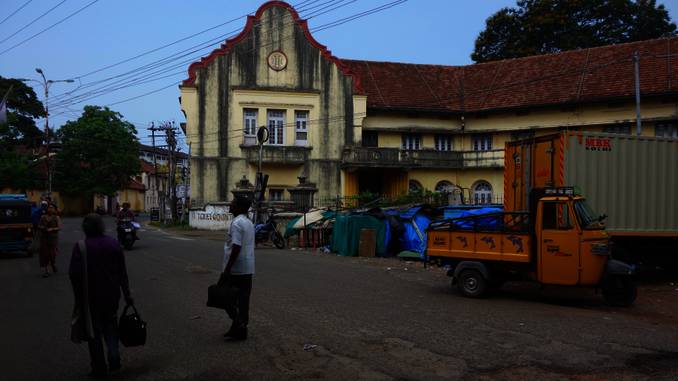
Street scene in Fort Kochi. Credit: Mary Kay Magistad
The ideas shared by the Fab City and Fab Lab network have also been invaluable, Geethamony says, connecting Kerala to a global network of people thinking about how to mesh digital fabrication, urban design and development, citizen participation, ecological awareness, conservation and recycling. Kerala’s aim is to emerge as a Maker and fabrication center in the era of the "Internet of Things," to draw back gifted Indians now working in Silicon Valley, to update Kerala’s education system and to give a boost to the local economy by nurturing startups, from the "pre-incubation stage" on up.
“Pre-incubation means, if a person or a group of guys comes up with an idea and the idea is found to be viable, then we give them, we’ll start giving them, incubation support,” he says. “If they come up with a viable idea within six months, they’ll be moved into incubation. If not, we’ll ask them to come up with a better idea.”
Students can do this while still in school — an effort by the local government to stem a trend of would-be entrepreneurs, looking to the examples of Bill Gates and Mark Zuckerberg.
“They seem to think being a drop-out is an added value or something,” Geethamony says. “We don’t encourage that.”
Another goal for Kerala, which is proud of its literacy and e-literacy, is to move to having wide-spread ‘f-literacy,’ fabrication literacy, throughout the general population — for more people to become comfortable making what they use. Geethamony likes the idea of everyone being involved in making as much as possible, but he recognizes that not everyone may be interested, at least not at first.
“It’s a very ambitious dream,” he says with a smile.
But Gershenfeld says it’s just a matter of time before personal fabrication starts to change lives around the world, whether people are initially interested or not.
“If computers were the first digital revolution, and the internet was the second, personal fabrication is the third,” he says. And from where he sits, there is no question; the revolution has already begun.
Mary Kay Magistad, IFTF Research Fellow and recovering foreign correspondent, is creator and host of the “Whose Century Is It?” podcast, a coproduction with PRI/BBC’s The World, exploring ideas, trends & twists shaping the 21st century. It’s available on iTunes, most podcast apps, and at pri.org/century.



